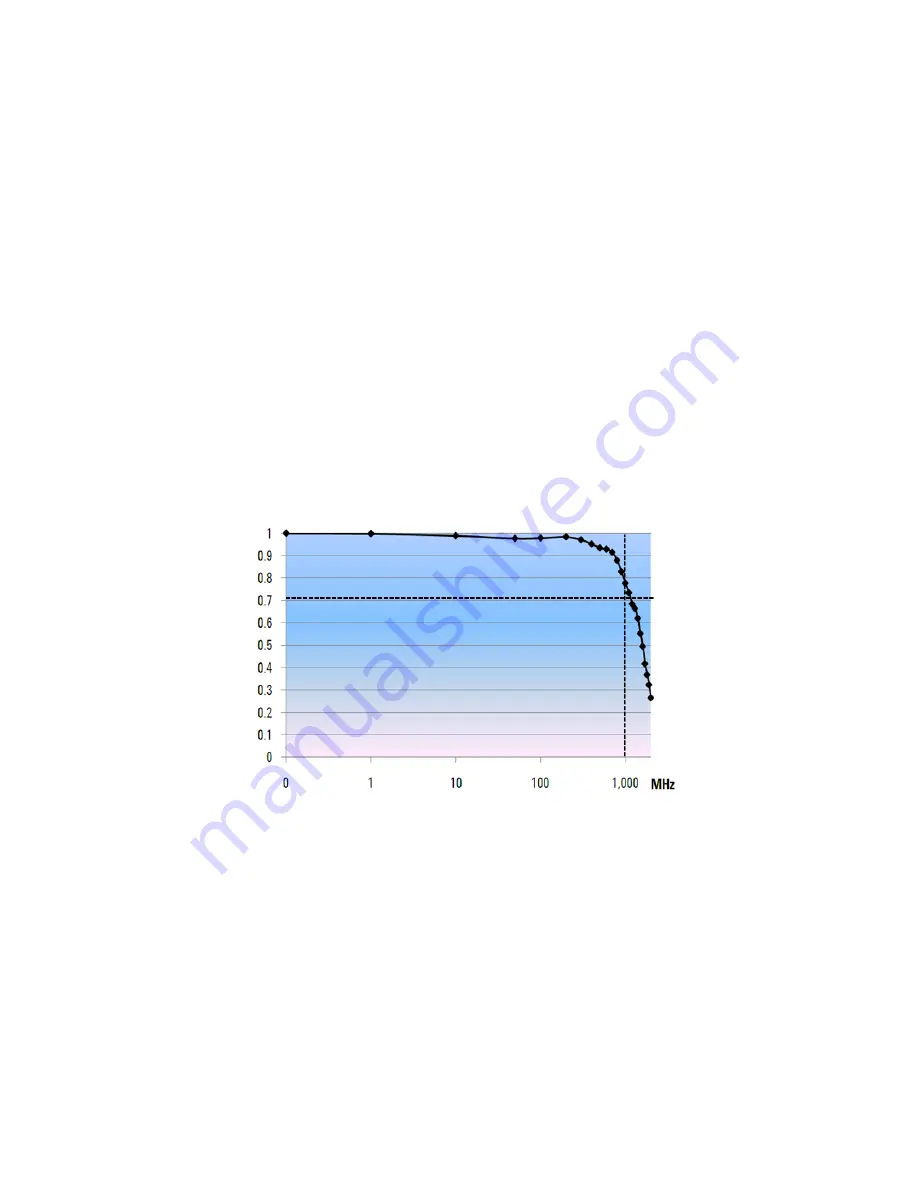
Oscilloscope Bandwidth Tutorial
B
4000 X-Series Oscilloscopes Advanced Training Guide
159
Required Bandwidth for Analog Applications
Years ago, most oscilloscope vendors recommended that your scope’s bandwidth
should be at least three times higher than the maximum input signal frequency.
Although this “3X” multiplying factor would not apply to digital applications based
on clock rates or edge speeds, it still applies to analog applications, such as
modulated RF. To understand where this 3-to-1 multiplying factor comes from,
let’s look at an actual frequency response of a 1 GHz bandwidth scope.
shows a measured frequency response test (1 MHz to 2 GHz) on an
Keysight 1 GHz bandwidth oscilloscope. As you can see, at exactly 1 GHz the
measured output (waveform on oscilloscope display) is attenuated by slightly less
than 3 dB (Vo/Vi > 0.7). To make accurate measurements on analog signals, you
would need to use the scope in the portion of the frequency band where it is still
relatively flat with minimal attenuation. At approximately one-third the scope’s
1 GHz bandwidth, this scope exhibits very little attenuation (-0.2 dB).
Figure 105
Actual frequency response of an Keysight 1 GHz bandwidth oscilloscope


























